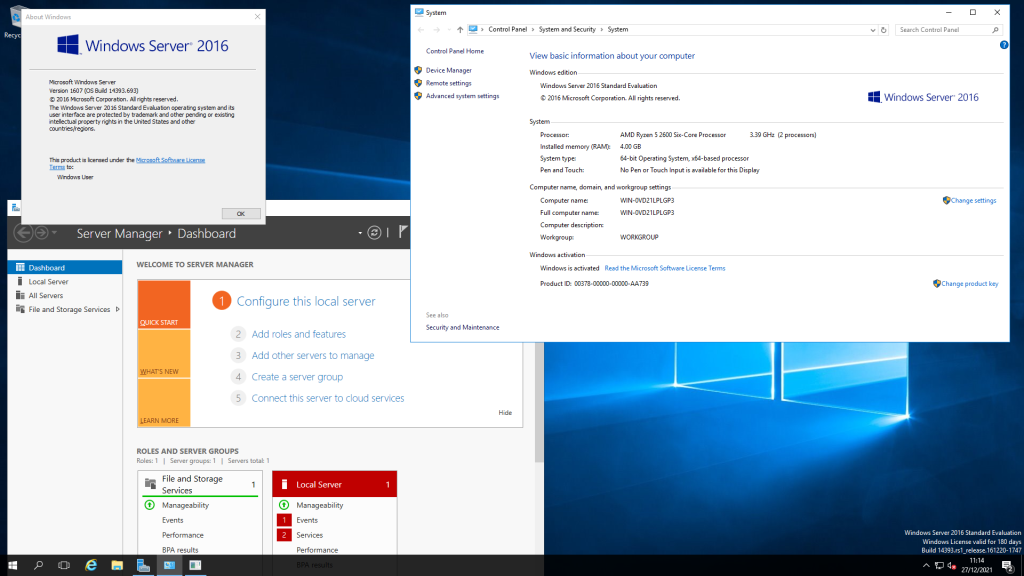Windows Server 2016 Standard October 2020 Free Download
Windows Server 2016 is a modern server operating system from Microsoft that includes integration with Azure services and extensive capabilities for creating cloud applications using containers and microservices. Windows Server is based on the Windows Server 2016 platform and provides extensive capabilities for deploying infrastructure of various sizes and functionality, including cloud services, virtualization systems, file storage, and containers with Windows and Linux applications.
The operating system is available in Standard and Datacenter editions. Their main difference is that Standard comes with two virtual servers, and Datacenter – with an unlimited number. For each of the Windows Server editions, two installation options are available:
- Server Core. The default installation option. It is the most productive and not demanding on resources, as it does not have a graphical interface. The operating system is installed with the PowerShell command line interface.
- Server with desktop (Desktop Experience). Installation of server components with a graphical environment similar to the Windows 10 interface and the PowerShell console.
When developing the system, the developers focused on four areas:
Hybrid cloud
- The new server OS provides convenient sharing with Azure cloud services. For convenient and centralized management of servers, clusters and workstations, a new Windows Admin Center is available, which has a multifunctional web control panel. The application compatibility feature of the core server components on demand (FOD) significantly improves application compatibility.
Security
- The built-in Defender ATP and Defender Exploit Guard technologies make it difficult to unauthorized access to the system and exploit vulnerabilities and detect attacks at the memory and kernel levels. Additional protection is provided by: Network protection, Exploit protection, Controlled file access and Attack surface reduction (ASR).
Application platform
- The system has containers for running Windows applications, as well as containers for Linux, the size of which is significantly reduced.
Hyperconverged infrastructure
- Combining storage and computing resources in one server allows you to reduce costs and have good scalability.
Windows Server 2016 has a new data migration tool – Storage Migration Service. First, data is analyzed on all servers, then files, folders and configurations are transferred, followed by interception of control and substitution of the identifier and network parameters from the old server to the new one. This process can be controlled in Windows Admin Center. Thus, individual users and applications do not have to make any changes to the parameters.
What’s new in Windows Server 2019:
- Centralized management with Windows Admin Center.
- System analytics powered by machine learning.
- Hybrid cloud enabling application and service sharing.
- Network performance improvements for virtual workloads
- New capabilities in failover clustering.
- New capabilities in Storage Replica.
- Linux support.
- Security improvements.
- Storage Migration Service.
- Container improvements.
- High-performance SDN gateways.
- Virtual network encryption.
- Data transfer using Low Extra Delay Background Transport.
- Persistent memory support for Hyper-V virtual machines.


Leave a Reply